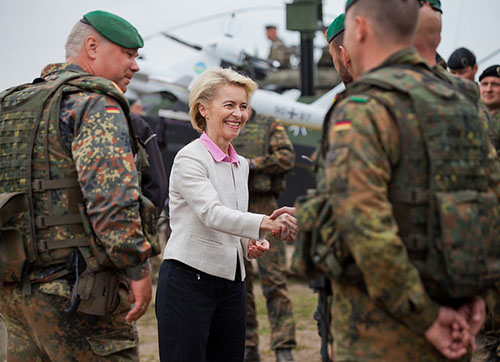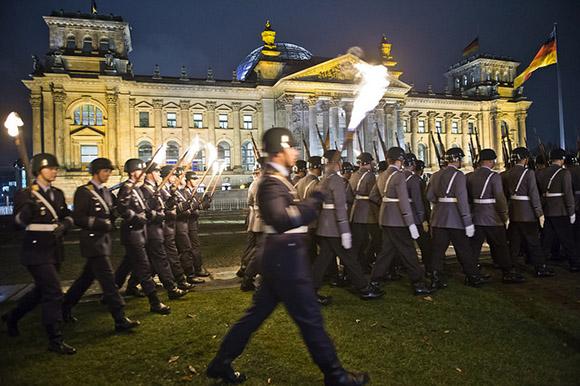Germany has kicked off a long-awaited move: the reconstruction of the country's armed forces. Specifically, for what was once the largest army in Western Europe, we will proceed to recruit other 14.300 soldiers "to combat modern threats in all sectors". Recruitment will be completed within the next seven years.
A quarter of a century of contraction is over - said Defense Minister Ursula von der Leyen (photo) - for the Bundeswehr it is time to grow. We must get out of the process of permanent contraction.
The Ministry of Defense has already announced that the budget for military spending will grow from the current 34,2 to the 39,2 billion euros within the 2020. The first step of 4.400 unit will concern in part the civilian staff already serving with the German armed forces.
"The country is already engaged in 16 missions abroad including the fight against the Islamic State in Syria and Iraq, the monitoring of refugee flows from all over the Mediterranean, support for NATO allies in the East alarmed by the tensions in Eastern Ukraine. A recent internal review confirmed what the national media have widely referred to: obsolete equipment partly from the Cold War and deficient labor force ".
At the height of the Cold War, the Bundeswehr included, among civilians and soldiers, 670.000 units. Currently, the German army is formed by 177 thousand military and 87 thousand civilians. Therefore, the limit imposed in the 2011 set at 185 thousand units is circumvented. Even considering the cuts, Germany owns the second army of Europe, behind only the United Kingdom.
 These efforts are not considered satisfactory by the United States. On paper, all NATO members should spend 2 percent of GDP on military spending. The German economy can not currently guarantee an investment in excess of 1,2 per cent. It is also true that the 2 percent threshold is clearly hypothetical. Ideal, in some ways, but only in a country with a strong and stable economy.
These efforts are not considered satisfactory by the United States. On paper, all NATO members should spend 2 percent of GDP on military spending. The German economy can not currently guarantee an investment in excess of 1,2 per cent. It is also true that the 2 percent threshold is clearly hypothetical. Ideal, in some ways, but only in a country with a strong and stable economy.
Assessing the Alliance without American support would still be impossible because, to date, one wonders what the real military capacity of the member countries is. In reality, the European contribution to NATO has never been thought of as military, but rather as a logistical support for the presence in Europe of the United States.
Then analyzing the military spending, we realize how much Europe has 'pampered' over the years, leaving the front line to the Americans. European NATO members count about 230 million more people than the United States, with a combined gross domestic product that is slightly higher than the US. Yet the European nations spend only the 37 percent of the United States for defense: 270 billions of dollars against 735.
In the 1990, shortly after the fall of the Berlin Wall, the European nations spent about the 60 per cent of what the United States invested in military spending: $ 186 billion (NATO countries) against the $ 306 billions of dollars.
The problem is that the United States, the United Kingdom and France have encouraged European nations to build project-oriented forces like in Afghanistan, sending troops far from national borders. By conveying funds in this direction, internal military spending has become optional.
(photo: Bundeswehr)












